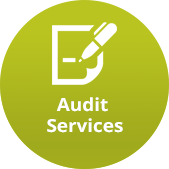June 2018 Edition - End of Financial Year Guide
In this edition:

Reporting requirements for Single Touch Payroll
Single Touch Payroll reporting for employers begins on 1 July 2018. This article will help your company is prepare for Single Touch Payroll reporting. The new system will affect employers with 20 or more employees.
Salaries and wages, pay as you go (PAYG) withholding and superannuation information will need to be reported from your payroll solution at the time payments are made to employees.
The Single Touch Payroll (STP) system is likely to be expanded to employers with 19 or fewer employees after 1 July 2019, subject to a further change in legislation.
Which employees should be included in a Single Touch Payroll head count?
- all full-time and part-time employees
- casual employees and seasonal workers who were on your payroll on 1 April and worked any time during March. There are exemptions to counting seasonal workers who were employed for a short-time.
- overseas-based employees
- employees who are absent or on leave (paid or unpaid)
Don't include:
- employees who ceased work before 1 April
- casual employees who did not do any work in March
- any independent contractors
- staff under third-party labour hire agreements
- company directors or office holders
- religious practitioners
Company directors, office holders and religious practitioners are not considered employees by the common law definition. However, their payment information needs to be reported because the payments are subject to withholding and are currently reported in the Individual non-business payment summary.
If you have not already updated your payroll system to a version that is STR compatible, we encourage you to implement this requirement before 1 July. Check out the ATOs About Single Touch Payroll page for details to assist with the process.
Contact us for assistance to ensure your business is ready for Single Touch Payroll.
Contact details
Suite 401 29-31 Solent Circuit
Norwest Business Park
Baulkham Hills, NSW 2153 Australia
View location map
P:
(02) 9899 3044
F: (02) 9899 1524
About Us
Our Team Members are the heart and soul of our business. Our team's guiding principles are integrity, respect, teamwork, achievement and innovation. Our guiding principles are the keys to our culture and to achieving our vision.
Resources
We offer a range of free and easy to use
online resources and tools including...











